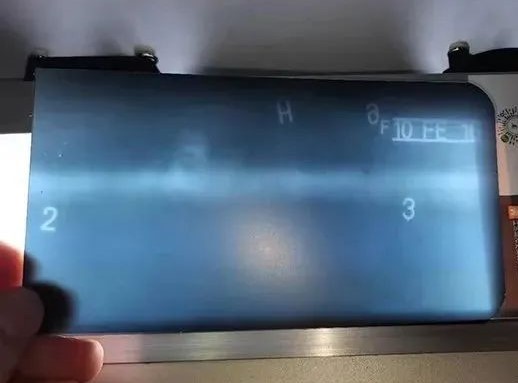We often see strip defects in rework orders. Many welders say, “I know about pores, slag inclusions, and incomplete penetration. What is this strip defect? I can’t see it during grinding. What is this defect?”
Today, let’s explain the definition of strip defects. The defects detected by weld film are defined by the size of the defect. Porosity and slag inclusions with an aspect ratio greater than 3 are defined as strip defects. Incomplete penetration is a continuous straight line without width, so most strip defects are cracks, strip pores and strip slag inclusions.
Xinfa welding equipment has the characteristics of high quality and low price. For details, please visit: Welding & Cutting Manufacturers – China Welding & Cutting Factory & Suppliers (xinfatools.com)
The rating method of strip defects can be summarized as rating by the length of a single strip defect and the total length of strip defects.
Since strip defects are not allowed in the first-level film, they are divided into Level II, Level III or Level IV according to the size of the strip defects.
First, the level of a single strip defect is evaluated. The length of each strip defect is measured, and the longest strip defect is taken. It is compared with the length of a single strip defect allowed in Level II specified in the strip defect classification table. If it does not exceed, it is Level II; if it exceeds, it is compared with the length of a single strip slag specified in Level III. If it does not exceed, it is Level III; if it exceeds, it is Level IV.
Rating by total length: If the single slag does not reach Level IV, it needs to be rated by total length again. Assuming that the single slag is level II, add the lengths of the strips of slag with a spacing of ≤6L (L is the length of the longest slag in the group of slag inclusions) in a group of adjacent slag inclusions within a length of 12T (T is the thickness of the base material). If the total length is ≤T, the weld is level II; if it exceeds T, add the lengths of the strips of slag with a spacing of ≤3L in the adjacent slag inclusions within a length of 6T. If the total length is ≤T, it is level III, and if it exceeds T, it is level IV. If a single strip of slag is level III, add the lengths of the strips of slag with a spacing of ≤3L in the adjacent slag inclusions within a length of 6T. If the total length is ≤T, it is level III, and if it exceeds T, it is level IV.
According to the pipeline design requirements, if the requirement is that the first-level piece is qualified, it must be repaired as long as there is a strip defect. If it is level II qualified, the level is determined according to the size of the strip defect.
Post time: Apr-24-2025




